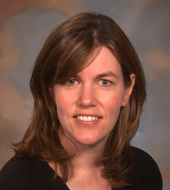Summary
Definition
History and exam
Key diagnostic factors
- presence of risk factors
- previous treatment for asthma without response to bronchodilators
- episodic shortness of breath: rapid onset and resolution
- difficulty inhaling
- cough
- inspiratory stridor
- increased sensitivity to non-specific triggers after initial exposure
- palpable laryngeal tension
- loss of consciousness
Risk factors
- laryngopharyngeal reflux (LPR)
- GORD
- asthma
- occupational/environmental irritant exposure
- female sex
- competitive athletics
- anxiety
- muscle tension dysphonia
- adductor laryngeal breathing dystonia
- surgery
Diagnostic tests
1st tests to order
- flexible nasolaryngoscopy
- PFTs/flow-volume plot
Tests to consider
- sinus CT
- laryngeal sensory discrimination testing
Treatment algorithm
unstable, undiagnosed patient with stridor
stable patient with stridor suspected to be secondary to PVFM/ILO
without acute stridor
Contributors
Authors
Rita Patel, PhD, CCC-SLP
Associate Professor
Department of Speech, Language and Hearing Sciences
Indiana University Bloomington
Bloomington
IN
Disclosures
RP is on the Board of Trustees for the American Speech-Language-Hearing Foundation, Editor-In-Chief for the American Journal of Speech-Language Pathology, an educational course content developer for Northern Speech Services, and has received grants or pending grants from the National Institutes of Health, and employment at Indiana University.
Susan L. Thibeault, PhD

Professor
UWHealth Medical Director of Speech and Hearing Services
Division of Otolaryngology - Head and Neck Surgery
University of Wisconsin School of Medicine and Public Health
Health Sciences Learning Center
Madison
WI
利益声明
SLT declares that she has no competing interests.
鸣谢
Dr Rita Patel and Dr Susan L. Thibeault would like to gratefully acknowledge Dr Michael Johns and Ms Sheeri K. Zelazny, previous contributors to this topic. MJ and SZ declare that they have no competing interests.
同行评议者
Julina Ongkasuwan, MD
Associate Professor
Otolaryngology - Head and Neck Surgery
Baylor College of Medicine
Texas Children’s Hospital
Houston
TX
利益声明
JO receives book royalties from Springer and Elsevier.
Janet Wilson, BSc, MD, FRCSEd, FRCSEng
Professor of Otolaryngology - Head and Neck Surgery
Newcastle University
Honorary Consultant Otolaryngologist
Freeman Hospital
Newcastle-Upon-Tyne
UK
利益声明
JW declares that she has no competing interests.
Ryner Jose Dela Cruz Carrillo, MD, MSc, FPSOHNS, FPAHNS
Associate Professor
Department of Otorhinolaryngology
Department of Anatomy
University of the Philippines
College of Medicine
Manila
Philippines
利益声明
RJDCC declares that he has no competing interests.
Tom Murry, PhD
Professor of Speech Pathology
Department of Otolaryngology - Head and Neck Surgery
Clinical Director of the Voice and Swallowing Center
College of Physicians and Surgeons
Columbia University at New York Presbyterian Hospital
New York
NY
Disclosures
TM declares that he has no competing interests.
Peer reviewer acknowledgements
BMJ Best Practice topics are updated on a rolling basis in line with developments in evidence and guidance. The peer reviewers listed here have reviewed the content at least once during the history of the topic.
Disclosures
Peer reviewer affiliations and disclosures pertain to the time of the review.
References
Key articles
Morris MJ, Allan PF, Perkins PJ. Vocal cord dysfunction: etiologies and treatment. Clin Pulm Med. 2006;13:73-86.
Clemm HH, Olin JT, McIntosh C, et al. Exercise-induced laryngeal obstruction (EILO) in athletes: a narrative review by a subgroup of the IOC Consensus on 'acute respiratory illness in the athlete'. Br J Sports Med. 2022 Jun;56(11):622-9.Full text Abstract
Leong P, Vertigan AE, Hew M, et al. Diagnosis of vocal cord dysfunction/inducible laryngeal obstruction: an international delphi consensus study. J Allergy Clin Immunol. 2023 Oct;152(4):899-906.Full text Abstract
Reference articles
A full list of sources referenced in this topic is available to users with access to all of BMJ Best Practice.

Differentials
- Asthma
- Laryngomalacia
- Vocal fold paresis/paralysis
More DifferentialsGuidelines
- Inducible laryngeal obstruction: an official joint European Respiratory Society and European Laryngological Society statement
- Inducible laryngeal obstruction: an official joint European Respiratory Society and European Laryngological Society statement
More GuidelinesLog in or subscribe to access all of BMJ Best Practice
Use of this content is subject to our disclaimer